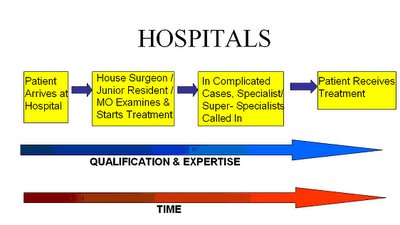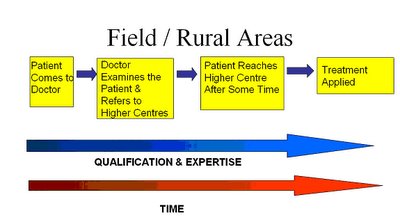Indian Railways requires no background but yeah the pricing structure of the railways does. You can go through a
post over here to understand their pricing structure thoroughly.
My argument centers on the online pricing policy adopted by the Indian Railways.
Let me start with an example –
For a ticket in an express train (A.P. Express) from Hyderabad to New Delhi, the charges I had to pay for an I-ticket are as following –
Base Fare – 1220
Reservation Charges – 25
Super fast Charges – 30
Internet Service Charges – 40
Courier Charges – 20
Transaction Charges (ICICI Bank Debit Card) – 11
Total = Rs. 1346
For rail reservation from the railway counters, the railways charge Reservation Charges for the infrastructure which the customer uses to get the tickets reserved like the manpower, stationary etc.
Introduction of online reservation introduced internet reservation charges levied on the consumer for using the online infrastructure of Indian railways. But now, the online customer pays for both online service charges in addition to the Reservation charges.
Why is the customer being billed for what he hasn’t utilized?
It seems like a way of discouraging the customers from using the online system while it should have been otherwise.
The cost structure of any service for the service provider will have a fixed and a variable component. Online services are cheaper because the service provider’s variable component goes down to almost negligible with just one time fixed cost.
This is what Banks have realized and are now encouraging their customers to go online by charging extra amount for providing a service from the bank counter to reduce the bank traffic and thus reduce the costs further.
Then why is the railways even after four years charging extra from the online customer?
Talking about figures, according to
IAMAI (Internet and Mobile Association of India) Indian Railways recorded 2.5 million ticket sales through the Internet in the last financial year, a growth of 100 percent over 1.2 million sold in 2004-05.
Assuming each reservation from the Indian railway counter takes an average of 5 minutes (which I am sure majority will agree is negligible as compared to the actual), the number of man-days saved are 18116 which is working with 100% efficiency. Working with an extraordinary efficiency of 70% Indian Railways saved 25880 man-days in a year.
There are two ways of making profit - by reducing cost or by increasing prices. And over here Indian Railways is exhibiting the features of a poor service provider with lack of vision. Instead of sharing the savings with the customer, they are being charged extra for a cheaper service. It won't be too late before the customer's retaliate to this exploitation of monoply rule.
The X-Man
Manish Saini





